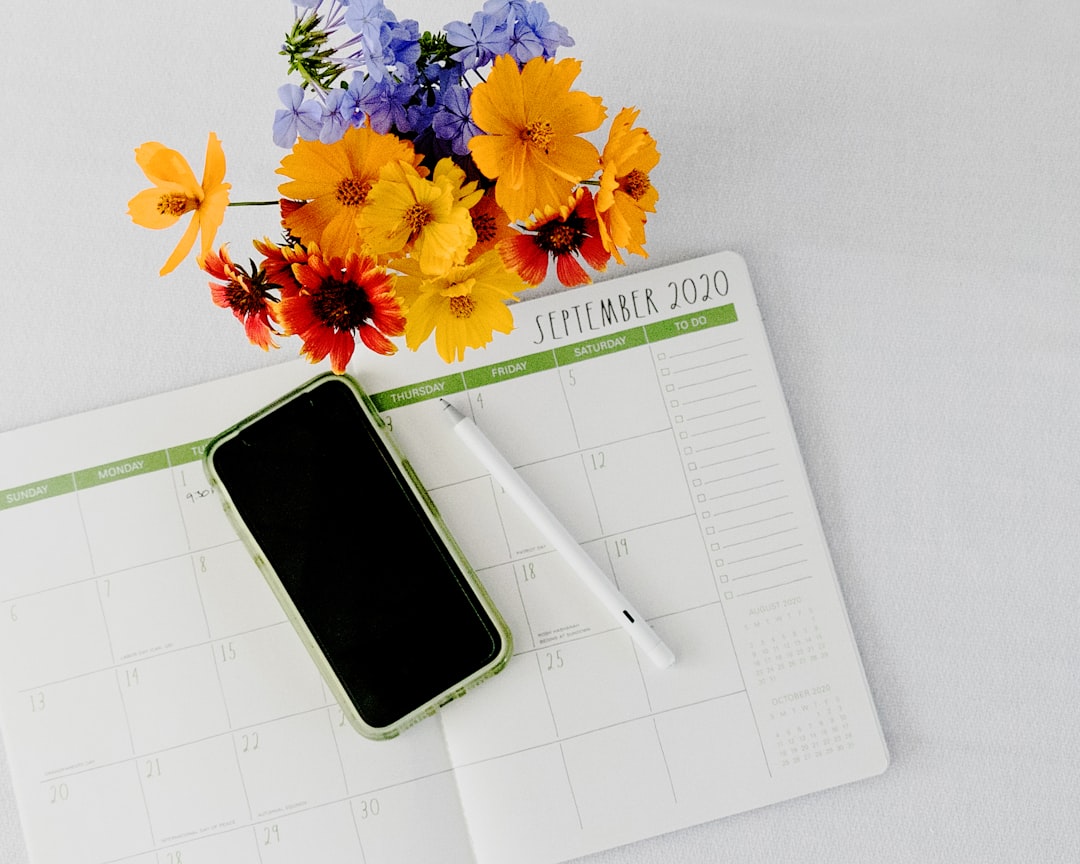Shopify Email/SMS Capture: 2-3x Signup Rates
Grow Shopify revenue with email/SMS capture. Triggers, offers, profiling, Klaviyo/Postscript setup, and A/B testing to 2–3x signup rates. Start optimizing.

Narayan Chaudhary
Narayan Chaudhary
October 12, 2025

List Growth That Prints Revenue: Email/SMS Capture Triggers, Offers, and Progressive Profiling That 2–3x Signup Rates on Shopify (Klaviyo/Postscript Setup + Testing Plan)
Traffic is expensive, attention is fickle, and most store sessions end without a purchase. Yet a large share of your future revenue will come from people who do not buy on their first visit. That is why high-performance capture, consent, and profiling is the most reliable way to turn sessions into sales. If you run a Shopify store and you are not turning 5 to 10 percent of visitors into email or SMS subscribers on key pages, you are leaving money on the table.
According to Klaviyo’s round-up of popup research, the average conversion rate on a popup is 3.80 percent, while the top 10 percent of businesses see conversion rates up to 23.67 percent, and popups that include an image average 4.96 percent, which shows how much optimization matters (as reported in Klaviyo’s popup best practices article citing Wisepops’ 2023 data). On the revenue side, automated messaging compounds results. The latest Omnisend benchmark report notes that automated SMS generated 26 percent of all SMS orders from only 13 percent of sends in 2023, which means a captured SMS subscriber is disproportionately valuable compared to a non-subscriber visit (Omnisend’s 2023 Email, SMS, and Push report PDF).
This guide distills how Byte & Buy members deploy capture triggers, offers, and progressive profiling to reliably 2 to 3x sign-up rates, then route those consents into flows that print revenue. We will show exactly how to implement it in Klaviyo and Postscript on Shopify, plus a testing plan you can run in two weeks.

The capture equation: where, when, what, and who
You are balancing four levers on every form. Where the form appears, when the form triggers, what you offer, and who you show it to. The conversion ranges above prove that small changes compound quickly, especially when they are behaviorally targeted.
Shopper experience comes first. Google’s guidance on avoiding intrusive interstitials reminds us that aggressive, screen-blocking popups damage search performance and mobile UX. Treat form timing and placement like UI, not just a growth hack. For accessibility, the W3C ARIA Authoring Practices recommend proper focus trapping, clear close buttons, and keyboard support in modal dialogs, which you can follow using the W3C Dialog Modal pattern.
Use that frame and then optimize for impact:
Where: home hero, product detail pages, collection pages, cart drawer, checkout, post-purchase page, and content gatewalls.
When: exit intent on desktop, scroll-triggered slide-ins on mobile, time-on-page delays for readers, and action-triggered moments like add-to-cart or discount reveal.
What: discounts, free shipping thresholds, early access, exclusive content, or tailored recommendations.
Who: segment by device, country, referral source, UTM, page type, and whether they are already a subscriber or customer.
Benchmarks and realistic targets for Shopify brands
Use averages as a baseline and then set aggressive, page-specific targets. The same Klaviyo article noted earlier cites Wisepops’ finding that single-field forms can outperform multi-field forms 4.30 percent vs 2.61 to 3.45 percent, though multi-step forms can offset the friction when you want both email and SMS in one flow (Klaviyo on popup field counts and multi-step forms).
Targets worth testing toward for most DTC brands:
High intent PDP or cart drawer slide-ins: 6 to 12 percent submit rate on desktop, 4 to 8 percent on mobile.
Sitewide exit intent overlays: 4 to 8 percent on desktop, 3 to 6 percent on mobile slide-in.
Checkout consent boxes: 25 to 45 percent email marketing consent, 8 to 20 percent SMS consent when copy is clear and compliant.
Post-purchase thank you consent: 10 to 20 percent additional SMS capture when positioned with order updates or VIP perks.
Klaviyo’s own form analytics and form revenue metrics make it easy to compare forms and attribute revenue from subscribers acquired by each capture point.
Triggers and placements that 2 to 3x signups without hurting UX
Desktop and mobile require different strategies. Exit-intent triggers work well on desktop, but on mobile there is no mouse leave, so use scroll thresholds or time-on-page slide-ins instead. The Klaviyo form targeting and behavior settings allow you to set exit intent for desktop, scroll depth for mobile, and vary frequency capping.
High performing placements for Shopify:
Product detail page slide-in at 45 to 60 percent scroll. The shopper has seen value signals and is primed for an offer or exclusive content.
Cart drawer micro-modal when someone opens the drawer twice or idles with items in cart. The nudge can be framed as a price lock or limited perk.
Exit overlay on high-intent URLs. Use URL targeting to show overlays on /products, /cart, or /checkout, but suppress on low-intent or SEO landing pages to stay within Google’s interstitial guidance.
Post-purchase thank you page. Adding an SMS opt-in for shipping updates or VIP perks often converts surprisingly well because trust is highest immediately after a purchase.
Also segment by context. New visitors should see an introductory incentive. Returning visitors can get a value-led offer like early access rather than repeating the same discount. The Klaviyo guide describes using exclusion segments to suppress existing subscribers, which protects UX and avoids wasted impressions.

Offers that convert without wrecking your margin
Discounts work, but they are not the only play. Free shipping is a classic because it reduces friction on the most common objection, and Shopify’s free shipping guide recommends threshold strategies to lift average order value as a complement to conversion. If you do discount, keep the offer precise. Dollars off often feels more tangible at mid-ticket prices, percent off can feel larger at higher prices, and gift-with-purchase is efficient in categories with strong unit economics.
Plenty of Byte & Buy members substitute discounts with access, especially when demand is driven by social selling or drops. Early access and back-in-stock alerts consistently pull high submit rates because they trade on scarcity. If you are designing a new drop flow or LP, our members-only guide on landing pages, Figma to Framer in 48 Hours, shows how to build capture-first pages fast.
When you do run price-based incentives, pair them with crisp copy at checkout. If you have not tuned your cart and checkout messaging yet, use the quick wins in Checkout Copy That Converts on Shopify to remove purchase friction that can erase the lift you got from capture.
For more nuance on pricing levers, urgency, and bundles, the Byte & Buy 2025 DTC Pricing Playbook outlines when to use anchors vs thresholds vs limited windows.
Progressive profiling that respects attention and improves personalization
Ask for the minimum on first contact and earn more data later. Multi-step forms are ideal because they split effort across screens. In Klaviyo, the help center explains that multi-step forms collect consent for multiple channels without intimidating visitors.
A practical sequence for Shopify:
Step 1: Ask for email only. Reward with the most universal offer like free shipping or early access.
Step 2: Ask for SMS with a distinct value, for example shipping alerts, last chance notices, or VIP texts. Make marketing consent language obvious and compliant.
Post-submission: Link to a preference page or micro-survey in the welcome series that writes into Klaviyo custom profile properties, for example preferred categories, sizes, or frequency.
Later: Use a short quiz or reply-to-text prompt in SMS to collect one zero party datapoint at a time.
Over months, this approach builds a profile in Klaviyo that you can segment against, and you can review fields and values inside Klaviyo Profiles. You will see the payoff in click and conversion targeting, not in opens. Apple’s Mail Privacy Protection makes opens misleading, and while the specifics change over time, the gist is consistent: as Litmus explains in their MPP overview, opens inflate and are noisy. Favor submit rates, clicks, conversion, and revenue per recipient when judging form and welcome series performance. Validity recently noted that Apple’s changes in 2024 even reduced some prefetch events, which further shuffled open rate tracking (Validity analysis).
Klaviyo setup: targeting, forms, checkout consents, and testing
Klaviyo is the hub for consent and data modeling. Here is the Shopify setup path our members follow.
Connect Shopify to Klaviyo. Then enable Klaviyo onsite JavaScript to display forms.
Create your first multi-step form in Klaviyo. In the Behaviors tab, use exit intent on desktop, scroll-based slide-in on mobile, and frequency caps that avoid showing repeatedly within a short window. The Klaviyo targeting and behavior guide explains timing and audience settings.
Segment targeting by URL. Show a PDP-specific form on URLs containing /products, and a cart drawer form on /cart. Suppress for logged-in users and known subscribers.
Add custom hidden fields for UTM capture. Persist UTM parameters and write to profile properties so you can segment welcome flows by traffic source.
Configure double opt-in for email lists. Klaviyo’s double opt-in guide explains how to turn it on and why it protects deliverability and list integrity.
Collect consent at checkout. For email, Shopify supports a marketing checkbox out of the box, and the help article on collecting customer contact information shows how to configure consent display. For SMS, Klaviyo now supports transactional and marketing SMS consent at checkout via an app block on Shopify checkout pages. Marketing and transactional are different purposes, keep the copy clear.
Switch on form analytics and revenue metrics. Use Klaviyo’s sign-up form analytics and form revenue metrics to prioritize winners.
A/B test offers and creative. Klaviyo supports native A/B testing for sign-up forms, and you can explicitly A/B test offers. Test one variable at a time: trigger, offer, headline, creative, or step order.
If you are still choosing a platform, you can trial Shopify quickly and stand up this entire stack in a day using Shopify’s free trial. You will connect Klaviyo in a few clicks from the Shopify App Store, then publish your first form from Klaviyo in under 30 minutes.
Postscript setup: SMS collection, compliance, and carrier readiness
Postscript is purpose-built for SMS on Shopify and makes collection, compliance, and automation straightforward.
Install Postscript and connect to Shopify. Then connect Klaviyo using Postscript’s Klaviyo integration guide if you want coordinated email and SMS.
Activate Shopify checkout collection. Postscript documents how to enable SMS consent in both one-page and three-page checkouts, which is the highest intent place to ask. Use their guides for one-page checkout or three-page checkout.
Use onsite capture to layer SMS after email. Postscript’s opt-in tools make it easy to run two-step onsite prompts so you do not overwhelm mobile visitors.
Set double opt-in and collect the right consent. Postscript’s SMS compliance guide explains prior express written consent requirements under TCPA and how double opt-in validates subscribers. Their compliance overview is a good operational checklist for opt-in language, quiet hours, and reply keywords.
Register for A2P 10DLC. U.S. carriers require registration for application-to-person messaging over 10-digit long codes. Twilio’s A2P 10DLC documentation outlines the requirement, and the CTIA’s Messaging Principles and Best Practices articulate consent and content standards carriers enforce. Registration improves deliverability and reduces filtering.
With compliance in place, build an automated welcome and browse abandonment ladder in Postscript. Automated messages are where the ROI lands, and Attentive’s analysis of high-performing SMS campaigns backs up that thoughtful message elements and clarity improve click and conversion.
Compliance, accessibility, and deliverability guardrails
Consent language and proof. TCPA requires prior express written consent for marketing messages, and your forms must clearly state what subscribers are signing up for, including message frequency and that consent is not a condition of purchase. See Postscript’s compliance guide for exact language patterns.
A2P 10DLC. Register your brand and campaigns, then align message content to your declared use case. Twilio’s A2P 10DLC docs explain the requirements.
Email authentication and unsubscribes. In 2024 Gmail and Yahoo introduced tougher requirements for bulk senders. Google’s announcement states you must authenticate with SPF, DKIM, and DMARC, provide easy one-click unsubscribe, and maintain low spam rates (Google’s bulk sender guidance and Gmail blog).
Accessibility. Follow the W3C dialog modal pattern for focus management and keyboard access, and ensure the close button is obvious on mobile.
SEO friendly forms. Respect Google’s interstitial guidance. Prefer slide-ins on mobile and reasonable timing. Suppress forms from immediate load on top landing pages and content hubs.

A two-week A/B testing plan that gets you to a winner
Run short, sharply defined tests. Use a single control variable each time and focus on a small number of high-traffic templates like PDP and cart drawer.
Week 1: trigger and format
PDP desktop: Test exit intent overlay vs 45 percent scroll slide-in.
Mobile: Test 20 second timed slide-in vs 50 percent scroll slide-in.
Cart drawer: Test slide-in on second drawer open vs slide-in on 10 seconds idle.
Week 2: offer and step order
Offer: Test 10 percent off vs free shipping for first order, or early access promise vs fixed discount. Keep copy and design constant.
Multi-step order: Test email first then SMS vs SMS first then email. Honor compliance language and explicit consent for each.
Decide winners with a sample size calculator like Evan Miller’s A/B test sample size tool, then run each experiment long enough for seasonality and day-of-week effects to wash out. Most brands can reach directional significance for form submit rate in 7 to 14 days on PDP and cart if they get at least a few hundred views per variant per day.
Prioritize metrics you can trust. Submit rate and earned revenue per form are durable. Open rate is not, especially with MPP inflation as noted earlier by Litmus. Use clicks, placed order rate, and revenue per recipient for lifecycle messages.
Measuring ROI and closing loops with analytics
Klaviyo form performance and revenue attribution. Use the form analytics view and form revenue metrics to compare submit rates and downstream revenue.
GA4 tracking. Push Klaviyo events like form_open and form_submit into GA4. Klaviyo documents how to mark form events as conversions in Google Analytics, which closes the loop for channel reporting.
Channel mix revenue. Compare revenue per recipient for email and SMS cohorts captured via different offers. Omnisend’s 2023 report showed automated SMS punching above its weight in orders relative to send volume, and you will likely see a similar pattern on your own list (Omnisend PDF).
Byte & Buy’s opinionated playbook for Shopify stores
Use image-backed slide-ins on mobile. The Wisepops data cited by Klaviyo suggests images lift conversion, and slide-ins respect mobile UX while still being visible.
Always exclude existing subscribers. Show different creative to returning customers, or suppress capture entirely.
Prefer early access and perks over pure discounts when you can. Add a small perk at checkout to protect margin, and use thresholds to guide AOV as Shopify’s free shipping guide suggests.
Make profiling a journey. Start with email, then ask for SMS with explicit value. Move preference collection to your welcome flow and collect one datapoint per message. Update Klaviyo profile properties as you go.
Invest in PDPs. Capture works better on great product pages, and we maintain a gallery of patterns in 100 Shopify PDPs: Design Patterns That Drive 3 percent CVR+. A higher baseline conversion rate makes your capture traffic more valuable.
Localize capture for international. If you sell across markets, see our playbook on Shopify Markets localization and tailor currencies, shipping, and language in your forms.

A 14-day implementation checklist
Day 1: Install Klaviyo and Postscript, connect Shopify, configure email authentication, set up lists and double opt-in, and register A2P 10DLC.
Day 2 to 3: Ship two multi-step forms in Klaviyo, one PDP-specific scroll slide-in and one cart drawer prompt. Add URL targeting and exclusion segments.
Day 4: Enable checkout consent for email and SMS using Shopify’s settings and Klaviyo’s SMS app block. Follow Shopify’s consent help and Klaviyo’s checkout SMS consent guide.
Day 5 to 6: Build email welcome and SMS welcome flows. Automate browse and cart abandonment in both channels with minimal but specific personalization.
Day 7 to 10: Launch A/B tests for trigger and format on PDP and cart drawer. Use Klaviyo’s form A/B testing.
Day 11 to 14: Launch offer and step order tests. Turn on form revenue metrics. Mark GA4 form events as conversions.
By day 15 you should be able to pick winners. Lock them in, then iterate offers and creative monthly. When you have this working, extend capture into social commerce flows and video-led pages. If you are building shoppable video or TikTok Shop, we break down setup in TikTok Shop for Shopify so your capture and consent carries over to new surfaces.
What to do next
If you are not yet on Shopify, start a build with Shopify’s free trial, connect Klaviyo and Postscript, and ship your first test in one day.
If you want curated examples and member-only playbooks, get full access to Byte & Buy at Upgrade. You can bookmark your next sprints at Bookmarks, manage your account at Account, and sign in or sign up at Sign in or Sign up.
If you want deeper CRO sprints, read Checkout Copy That Converts on Shopify and 100 Shopify PDPs. Use the UX ideas there to widen the top of your funnel while you optimize forms.
Finally, protect your capture wins with deliverability. Gmail and Yahoo’s 2024 rules mean authenticated email, clear one-click unsubscribe, and low spam complaints are table stakes. The Gmail bulk sender guidelines and Yahoo Sender Hub best practices provide the exact requirements. For SMS, Postscript’s compliance guidance and CTIA’s best practices keep your program whitelisted and your messages delivered.
Want annotated teardown examples and the exact templates Byte & Buy members clone for deposits, drops, and preorders on Shopify? Join us inside Byte & Buy, where we publish new member-only playbooks every week.